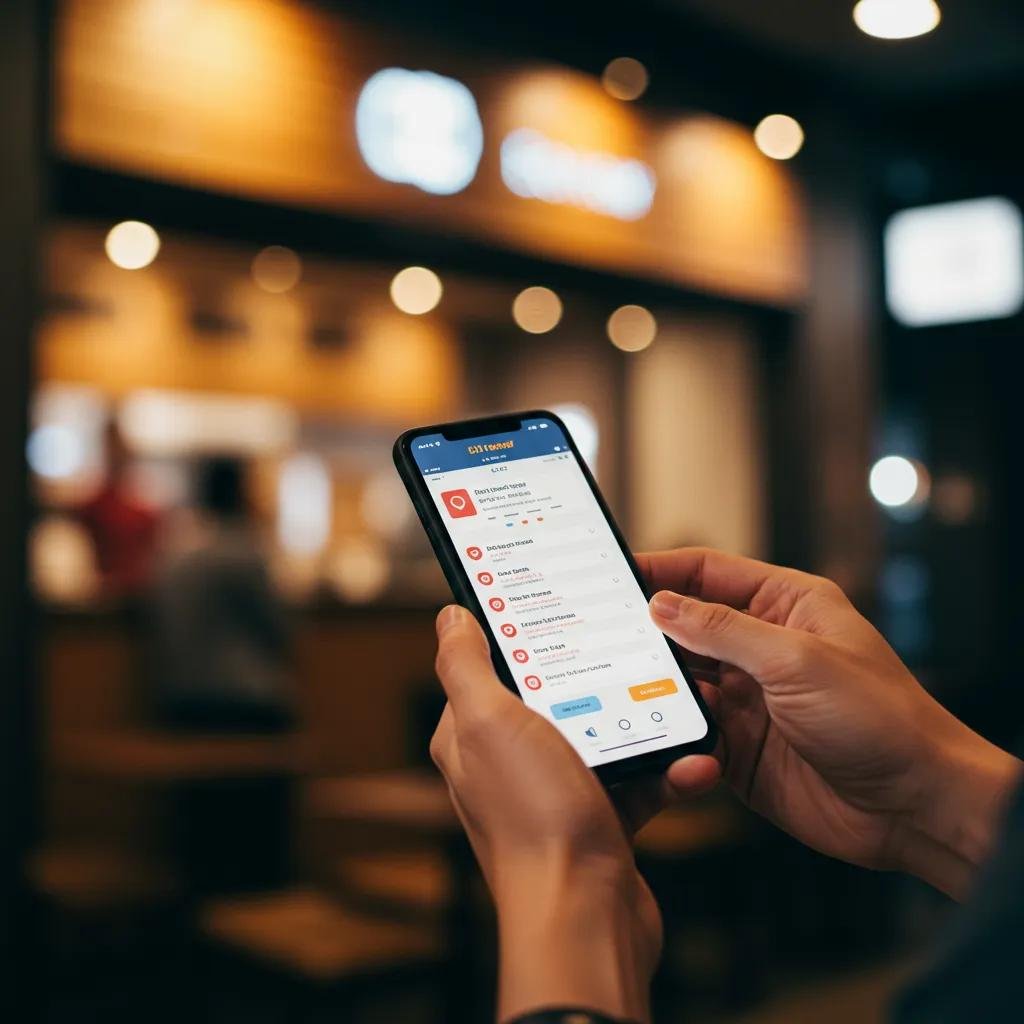
Boost Local SEO Rankings to Drive Business Growth
Local search drives 46 percent of all Google queries, yet many businesses struggle to appear in the Local Pack where 76 percent of “near me” searches convert to visits within a day.
Local Search Trends and Consumer Behavior
Research indicates that a significant portion of all Google searches, approximately 46%, have local intent. Furthermore, a high percentage of “near me” searches, around 76%, lead to a physical business visit within a day, highlighting the immediate conversion potential of local search.
This research provides foundational statistics on the prevalence and effectiveness of local search, directly supporting the article’s introduction regarding business growth opportunities.
Effective local SEO techniques can bridge this gap by aligning your online presence with user intent and Google’s ranking algorithms. In this guide, you will discover how to:
- Prioritize the top local ranking factors that fuel visibility and lead generation
- Optimize your Google Business Profile with precision
- Conduct geo-targeted keyword research and craft a winning strategy
- Implement structured data and rich snippets for enhanced SERP features
- Build authoritative local backlinks and manage citations consistently
- Measure performance with the right KPIs and diagnostic tools
- Leverage proven software and AI tools to scale your local SEO efforts
At sellmyhousepro.com, we simplify complex SEO processes into actionable roadmaps that yield measurable ROI for small and medium-sized enterprises. For additional insights and 10 powerful shortcuts, explore 10 Powerful Local SEO Hacks to Outrank Competitors – Kymin Creation.
What Are the Most Important Local SEO Ranking Factors for Business Growth?
Local SEO ranking factors combine relevance, proximity, and prominence to determine your position in map packs and local search results. Core elements include a fully optimized Google Business Profile, consistent NAP data, high-quality online reviews, strategic local backlinks, and mobile-friendly website design. Together, these signals inform Google’s algorithms and boost click-through rates, positioning your business for sustainable growth.
How Does Google Business Profile Impact Local SEO Rankings?

A complete and accurate Google Business Profile directly improves local search visibility by supplying Google with authoritative business information.
- Optimize every field: business name, address, phone, website and service areas
- Select precise categories and services to match searcher intent
- Publish regular posts, special offers and updates to signal freshness
- Add high-resolution photos and virtual tours to increase engagement
Maintaining an active profile cultivates trust signals that elevate your prominence in the Local Pack and feeds into review aggregation for richer SERP features.
The Impact of Google Business Profile and Online Reviews on Local Search Rankings
Studies consistently show that an optimized Google Business Profile is a primary factor for ranking in local search results, particularly in the Local Pack. Online reviews, including their quantity, quality, and recency, also significantly influence local visibility and are increasingly important differentiators in top rankings.
This citation verifies the critical role of Google Business Profile optimization and online review management, which are central themes in the article’s strategies for improving local SEO.
Why Are Online Reviews Critical for Local SEO Success?

Online reviews serve as social proof and ranking signals by demonstrating business quality and reliability.
- Review volume and recency influence aggregate ratings
- Star ratings and sentiment analysis feed into prominence metrics
- Responding to every review fosters engagement and trust
- Diverse review sources—Google, Yelp and industry-specific sites—enhance authority
Businesses with higher average ratings and rapid response rates appear more competitive in local SERPs, driving both clicks and conversions.
How Do Local Citations and NAP Consistency Influence Search Visibility?
Maintaining consistent Name, Address, Phone (NAP) data across directories and listings signals legitimacy to search engines and prevents confusion for users.
| Directory Example | Consistency Score | Trust Impact |
|---|---|---|
| Google Business | 100 % | Primary verification source |
| Yelp | 95 % | High consumer trust signal |
| Industry Association | 90 % | Niche relevance amplifier |
Accurate citations reduce conflicting data, ensuring your business appears correctly in map packs. Consistency across authoritative platforms solidifies Google’s confidence in your location and service offerings.
What Role Do Local Backlinks Play in Boosting Local SEO?
Local backlinks from community organizations, news outlets and partner businesses transfer domain authority and strengthen relevance signals.
- Sponsor local events or charities to earn mention links
- Guest post on neighborhood blogs with geographic context
- Partner with local chambers of commerce for directory inclusion
- Collaborate with suppliers for co-marketing content
Each link creates a semantic endorsement of your business within the local ecosystem, improving prominence and helping you outrank competitors.
How Does Mobile Optimization Affect Local Search Performance?
Mobile-friendly design and fast page speed enhance user experience and satisfy Google’s Core Web Vitals, critical for local rankings.
- Implement responsive layouts to adapt to all screen sizes
- Optimize images and leverage lazy loading for quick rendering
- Ensure clear click-to-call buttons and tappable areas for easier navigation
- Use accelerated mobile pages (AMP) where appropriate
A seamless mobile experience reduces bounce rates, increases dwell time and – as a result – signals to Google that your site is a strong match for on-the-go local queries.
How to Optimize Your Google Business Profile for Maximum Local Visibility?
A strategic Google Business Profile (GBP) optimization framework boosts discoverability and drives qualified traffic.
What Are the Key Sections of Google Business Profile to Optimize?
Every GBP section plays a distinct role in conveying business details and capturing user intent.
- Business Information: Name, address, phone, website URL
- Categories & Services: Primary category plus granular subcategories
- Attributes & Highlights: Accessibility, payment options, “Black-owned” etc.
- Photos & Videos: Exterior, interior, team shots, and product images
- Posts & Offers: Timely updates, promotions, events and COVID-19 notices
Covering these areas comprehensively ensures your profile appears in relevant searches and encourages conversions.
How to Manage and Leverage Online Reviews on Your GBP?
Proactive review management fosters social proof and continuous SEO uplift.
- Send review requests via email or SMS after service completion
- Respond promptly to both positive and negative feedback
- Offer clarification and solutions for negative experiences
- Showcase curated reviews on your website to boost on-page trust
Timely engagement with reviewers drives higher overall ratings and contributes to search prominence through improved aggregate scores.
What Are Best Practices for GBP Posts and Updates?
Regular posts keep your profile fresh and encourage user interaction.
| Post Type | Character Limit | Best Use |
|---|---|---|
| Offer | 1,500 | Promote discounts or bundles |
| Event | 1,500 | Announce webinars, workshops |
| Update | 1,500 | Share news, product launches |
| COVID-19 Notice | 1,500 | Communicate safety protocols |
Scheduling posts weekly sustains engagement and signals ongoing activity to search engines, reinforcing your profile’s relevance.
How to Choose the Right Categories and Services in GBP?
Selecting precise categories and service listings helps Google match searches to your offerings.
- Use a primary category that aligns tightly with core services
- Add up to ten additional categories for specialized offerings
- List individual services with clear titles and descriptions
- Review and update categories seasonally to reflect new capabilities
Accurate classification enhances relevance signals, increasing the likelihood of appearing for niche local queries.
How to Conduct Local Keyword Research and Develop a Winning Local SEO Strategy?
Effective local keyword research uncovers search terms that connect your services to geographic intent and buyer readiness.
What Are Geo-Targeting Keywords and How to Use Them?
Geo-targeting involves appending location qualifiers to core search phrases.
- Combine service terms with city names (e.g., “plumber in Austin TX”)
- Use “near me” modifiers for mobile and voice search queries
- Target neighborhoods or zip codes for hyper-local reach
- Incorporate region-specific vernacular and landmarks
Implementing geo-targeted keywords in titles, meta descriptions and on-page content aligns your site with local search patterns.
How to Identify and Use Long-Tail Local Keywords Effectively?
Long-tail local keywords capture specific user needs and indicate higher purchase intent.
- Brainstorm descriptive phrases (e.g., “emergency AC repair downtown”)
- Validate search volume and competition with keyword tools
- Create dedicated landing pages or FAQs around each phrase
- Track performance and refine based on conversion data
Focusing on long-tail variants reduces competition and increases the chance of featured snippet placement.
How to Analyze Competitor Keywords for Local SEO Advantage?
Competitor keyword analysis reveals content gaps and new opportunities.
- Audit top-ranking local competitors via tools like Semrush or Ahrefs
- Identify high-performing keywords where competitors rank in positions 2–5
- Analyze content formats and on-page optimization of competitor pages
- Incorporate uncovered keywords into your content roadmap
This approach uncovers untapped search queries and guides a more targeted local strategy.
What Is Structured Data and How to Implement Schema Markup for Local SEO?
Structured data helps search engines parse your content and display rich results that boost click-through rates and visibility.
How Does LocalBusiness Schema Improve Local Search Results?
LocalBusiness schema provides explicit business details that power enhanced SERP features.
- Embed fields for name, address, phone, geo-coordinates and openingHours
- Use the hasMap property to link to your Google Maps listing
- Add aggregateRating and review to showcase customer feedback
- Validate via Google’s Rich Results Test for error-free implementation
Correct schema increases the likelihood of Knowledge Panel and map pack inclusion by clarifying entity attributes.
What Are the Benefits of FAQ Schema for Local SEO Content?
FAQ schema enables collapsible Q&A sections directly in search results.
- Delivers instant answers to common user questions
- Expands your real estate of screen real estate in SERPs
- Improves user experience by reducing click distance
- Signals topical authority through structured knowledge sharing
Implementing FAQ markup can generate rich snippet placements that dominate the results page.
How to Use Rich Snippets to Increase Local Business Visibility?
Rich snippets highlight key information beneath your listing in search results.
- Implement HowTo schema for step-by-step guides
- Mark up events with Event schema for local workshops or open houses
- Use Product schema to feature services or packages
- Monitor performance and errors in Search Console’s Rich Results report
Rich snippets reinforce user trust and intrigue, driving higher organic engagement.
How to Build Local Links and Manage Citations for Stronger Local SEO?
Authoritative local links and comprehensive citations fuel prominence and trust in the local ecosystem.
Why Is NAP Consistency Essential Across Local Listings?
Consistent NAP details prevent listing fragmentation and conflicting data.
- Ensure identical formatting of business name (no extra punctuation)
- Use the same address format (street abbreviations vs. full words)
- Standardize phone numbers with local area codes and extensions
- Monitor major directories and correct discrepancies monthly
Reliable NAP data consolidates your entity presence and reduces Google’s hesitation to display your business.
How to Submit Your Business to Local Directories Effectively?
Directory submissions expand your citation footprint and referral traffic.
- Prioritize high-authority directories (Chamber of Commerce, BBB)
- Fill out every field accurately and include images where possible
- Claim listings on niche sites (industry associations, local blogs)
- Track submissions in a citation audit spreadsheet
A systematic approach ensures broad coverage without sacrificing data consistency.
What Are Proven Strategies to Acquire Local Backlinks?
Earning local backlinks strengthens your domain and relevance signals.
- Sponsor or speak at community events and request mentions
- Co-create content with vendors and ask for reciprocal links
- Host webinars on local SEO topics and share recordings with partners
- Offer scholarships to regional schools in exchange for .edu links
Each backlink from within your community communicates topical and geographic authority.
How to Measure and Track Local SEO Success for Business Growth?
Tracking the right metrics reveals which strategies drive leads and which need adjustment.
What Are the Key Local SEO Performance Indicators to Monitor?
Focus on metrics that reflect visibility, engagement and conversion.
- Local Pack rankings for target geo-keywords
- Map and search impressions and click-through rates
- Website sessions from local landing pages
- Review volume, star rating and response time
- Conversion rate of contact form submits or call-throughs
These indicators correlate directly with footfall, call volume and revenue generation.
Which Tools Are Best for Local SEO Reporting and Auditing?
A combination of specialized and general tools streamlines monitoring and optimization.
| Platform | Core Functionality | Advantage |
|---|---|---|
| Google Search Cnsl. | Rich snippet & performance | Free, direct Google insights |
| Google Analytics | Traffic & behavior | Custom segments for local landing pages |
| BrightLocal | Citation & rank tracking | Automated local pack rank grids |
| Semrush | Keyword & backlink audit | Competitor gap analysis |
| Moz Local | Listing management | Bulk edits and duplication detection |
Integrating these tools provides a holistic view of your local SEO landscape.
How to Conduct a Local SEO Audit to Identify Improvement Areas?
A structured audit highlights both quick wins and long-term fixes.
- Review Google Business Profile completeness and optimization
- Test website mobile performance and Core Web Vitals
- Audit on-page keywords, meta tags and content relevance
- Evaluate citation accuracy and backlink quality
- Check structured data markup for errors in Search Console
Prioritizing issues by impact ensures that high-value fixes are implemented first, driving faster gains.
What Are the Best Local SEO Tools to Boost Your Small Business Growth?
Adopting the right software accelerates research, execution and reporting for local SEO campaigns.
How Do Local SEO Tools Help with Keyword Research and Citation Monitoring?
Modern platforms consolidate multiple tasks into unified dashboards.
- Keyword modules suggest geo-modifiers and long-tail variants
- Citation trackers scan hundreds of directories for NAP consistency
- Rank trackers monitor Local Pack positions in real time
- Alert systems notify you of new reviews and listing changes
These capabilities free up time for strategy and content creation.
What Are the Top Tools for Managing Google Business Profile and Reviews?
Specialized tools streamline profile updates and reputation management.
- Reputation.com for centralized review responses
- Yext for bulk GBP edits and multi-location management
- GatherUp for automated review requests and sentiment analysis
Leveraging these platforms ensures your GBP remains accurate, active and highly rated.
How Can AI-Powered Tools Enhance Local SEO Strategies?
Artificial intelligence tools accelerate content ideation and optimization.
- Use GPT-based assistants to draft location-specific landing page copy
- Employ machine learning for predictive keyword and trend analysis
- Automate schema implementation through intelligent code injection
- Analyze large review datasets to extract sentiment and optimization cues
AI integration boosts productivity and uncovers insights that manual processes may miss.
Optimizing local SEO is an ongoing cycle of strategy, execution and measurement. By focusing on the ranking factors, GBP precision, structured data, content relevance, citations and authoritative links, your small business can capture more local traffic and convert searches into sales. Begin applying these effective local SEO techniques today to establish a lasting presence in your community and drive measurable growth.
